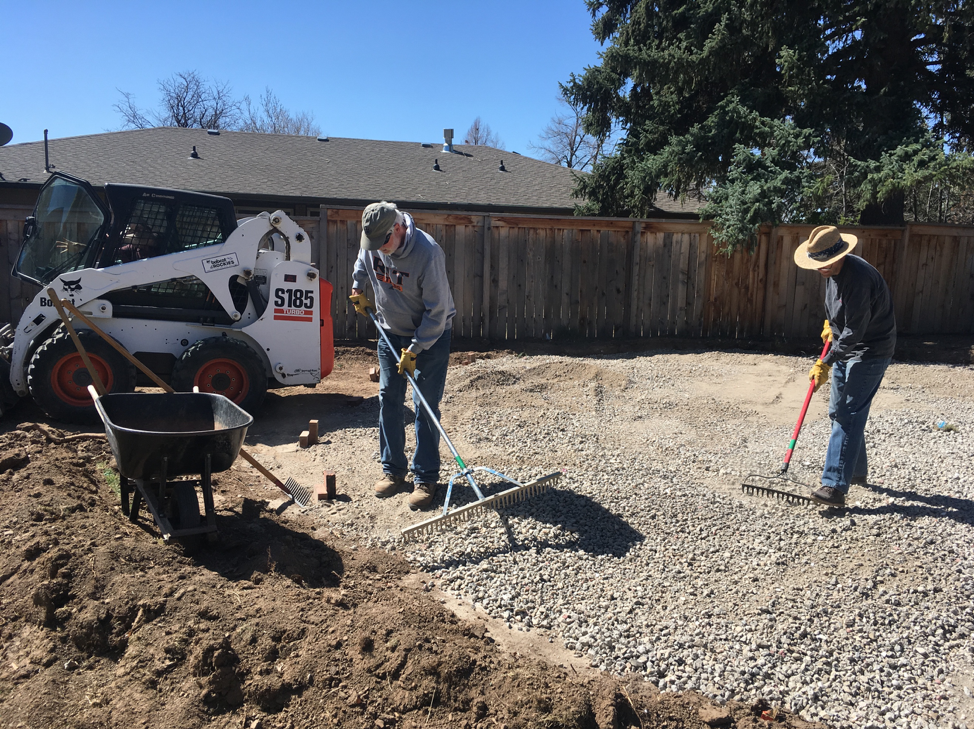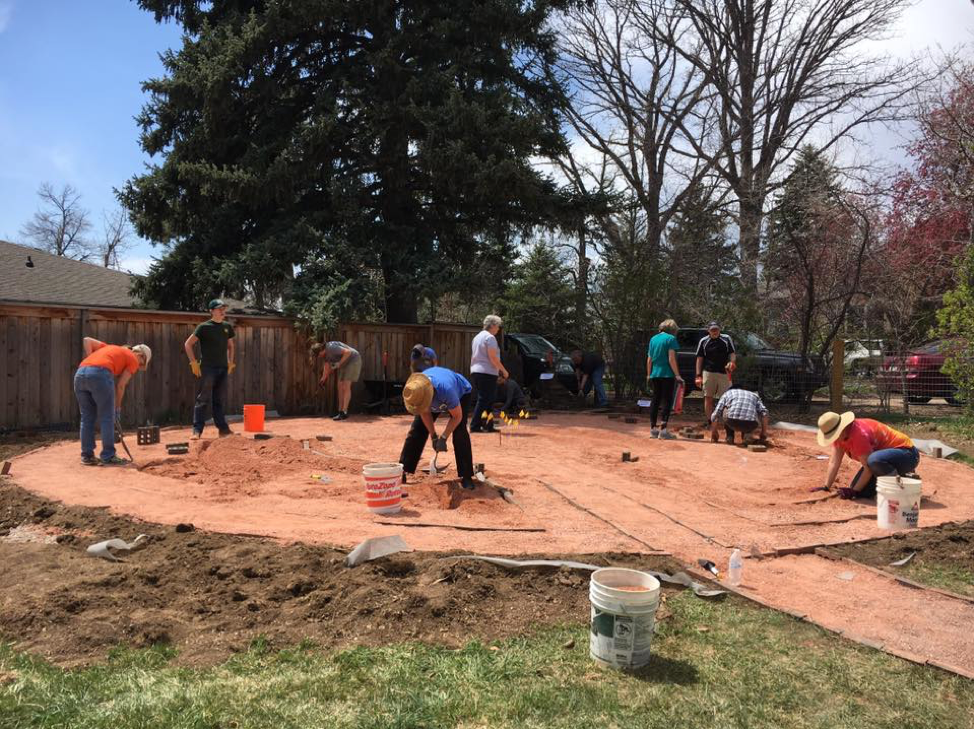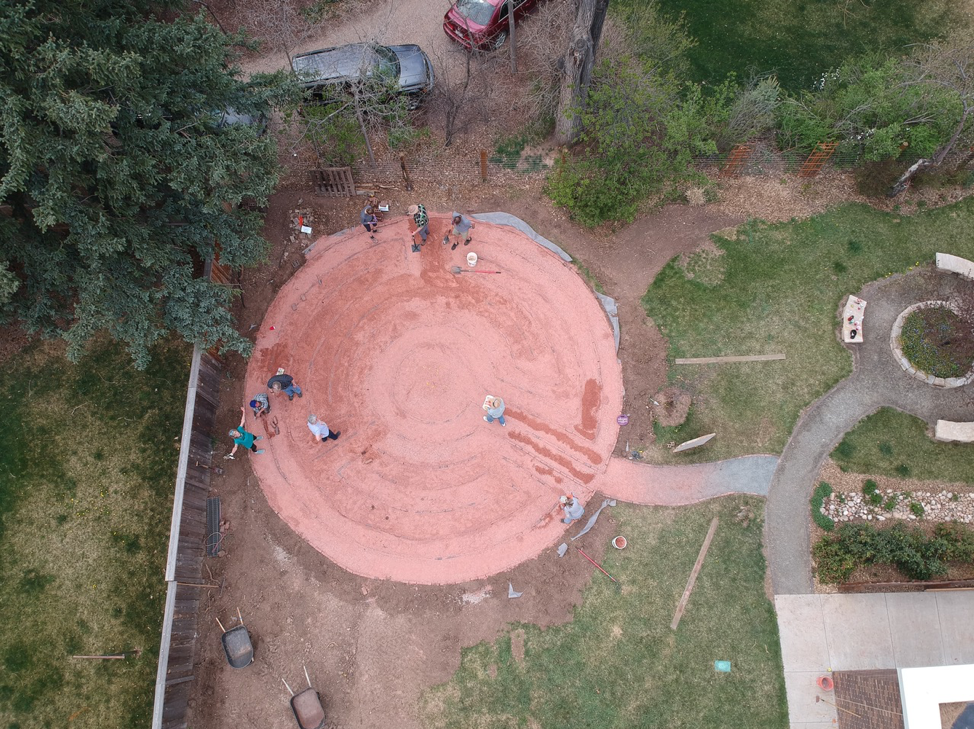 With a name like “Plymouth,” it’s hard to get away from the idea not just of the Plymouth Pilgrims, but from the concept of pilgrimage in general. Our faith is perhaps best described as a journey…not a stable, set-in-stone condition, but one that evokes movement and transformation. Some pilgrimages, like those of Abraham and our New England spiritual forbears are one-way pilgrimages through which one arrives at a new destination. In a recent series of adult ed. forums, Plymouth folks recounted their (round-trip) pilgrimages to the Holy Land, on the Camino de Santiago de Compostella, and in Scotland. Even though their journeys brought our pilgrims back home, pilgrimage is meant to change the way one sees God, self, and other. But what if one doesn’t have the time, money, physical ability, or inclination to travel on a pilgrimage? For 13th-century would-be pilgrims in France, the answer was to walk the circuits of the labyrinth in the cathedral at Chartres, emulating a pilgrimage to Rome or Jerusalem. Walking the labyrinth is a meditative tool rediscovered in the 1990s by the Rev. Lauren Artress, an Episcopal priest. According to the website of the organization she founded, “The labyrinth is a walking meditation, a path of prayer and an archetypal blueprint where psyche meets Spirit. It has only one path that leads from the outer edge in a circuitous way to the center. There are no tricks to it and no dead ends. Unlike a maze where you lose your way, the labyrinth is a spiritual tool that can help you find your way.” I’ve used the labyrinth for prayer at volatile times in my life when I’ve needed to find the quiet center, at times when I am in discernment about a significant decision, and at times when I’ve just needed to seek God’s presence through a physical prayer form. A ministry team at Plymouth, led by Jane Nicolet, has been working for just about a year with our Memorial Garden Ministry Team and our Trustees to design and create such a tool for Plymouth. The Trustees excavated the space, filled in recycled concrete base, and the layer of breeze visible on the surface. The ministry team had a group of 20 Plymouth volunteers, from teens to seniors, place bricks into place to form the circuits of the labyrinth. The Leadership Council authorized financial support from the Memorial Garden reserve fund, memorial gifts given in honor of our members, the sale of several cemetery plots Plymouth owned, and an unsolicited gift from one of our members. Landscaping and two benches will also be added this spring. I invite you to join us as we dedicate the new labyrinth on Pentecost Sunday, May 20 at 12:15 (after the 11:00 service). Join us to thank our volunteers and to ask for God’s blessing. So, why and how does one use the labyrinth? For years, members of our congregation have been asking for advice on how to pray. The labyrinth provides a beautiful tool for walking prayer. It doesn’t require years of discipline to encounter…just the will to engage with intention and attention. Even if you have a robust prayer life, I’d recommend trying a prayer walk using the labyrinth to mix it up a bit. It is available to you at any time during the week…unless a service is in progress in the sanctuary or memorial garden. One of the members of the Labyrinth Ministry Team, Pat Slentz, will become a trained labyrinth facilitator this summer in a workshop with Lauren Artress at Ghost Ranch in New Mexico. Deep thanks to all who have participated in helping this dream become a reality here at Plymouth! I look forward to group walks, incorporating the labyrinth into our Sunday evening services, and to seeing you out walking in prayer! Shalom! Trustees Gary Olsen, Allen Norskog, Tom Dille, Barry Beatty, and Trustee Emeritus Tom Nesler do the initial grading and laying base materials. Plymouth volunteers completed the layout in one Saturday…many hands made light work! An aerial photo from a neighbor’s drone caught Plymouth volunteers laying brick into the labyrinth. Here is a guide from Lauren Atress on veriditas.org (download a PDF version here): The labyrinth is a sacred place set aside for you to reflect, look within, pray, negotiate new behavior. The rhythm of walking, placing one foot in front of the other, empties the mind, relaxes the body and refreshes the spirit. Follow the pace your body wants to go. The labyrinth can be walked in four stages. As you encounter other people walking the same path, simply allow them to pass. You walk the labyrinth with your body and rest your mind. REMEMBER Before walking the labyrinth Take time in gratitude be thankful for your life. Bless the people in your life. If there’s a specific event or situation troubling you, bring it to mind and form a healing question if possible. RELEASE Walking into the labyrinth This is the time to quiet the mind, let go of the mind chatter and release your troubles. Open your heart to feel whatever it might feel. Become aware of your breathing. Take slow breaths. Relax and move at your own pace. RECEIVE Standing or Sitting in the Center This is a place of reflection. Pause and stay as long as you like. Open yourself to your higher power. Listen to that small inner voice. In the safety of the labyrinth have a heart-to heart talk with yourself. RETURN Walking out of the labyrinth When you are ready, begin walking out the same path you followed in. Walking out, integration of your experience happens. Experience the sense of well-being, healing, excitement, calm or peace. Each labyrinth experience is different. You may feel nothing or have a powerful reaction. Whatever, listen to your heart and take all the time you need. The above description is only a thumbnail sketch. You provide the bigger picture. AuthorThe Rev. Hal Chorpennng has been Plymouth's senior minister since 2002. Before that, he was associate conference minister with the Connecticut Conference of the UCC. A grant from the Lilly Endowment enabled him to study Celtic Christianity in the UK and Ireland. Prior to ordained ministry, Hal had a business in corporate communications. Read more about Hal. Comments are closed.
|
Details
|




 RSS Feed
RSS Feed